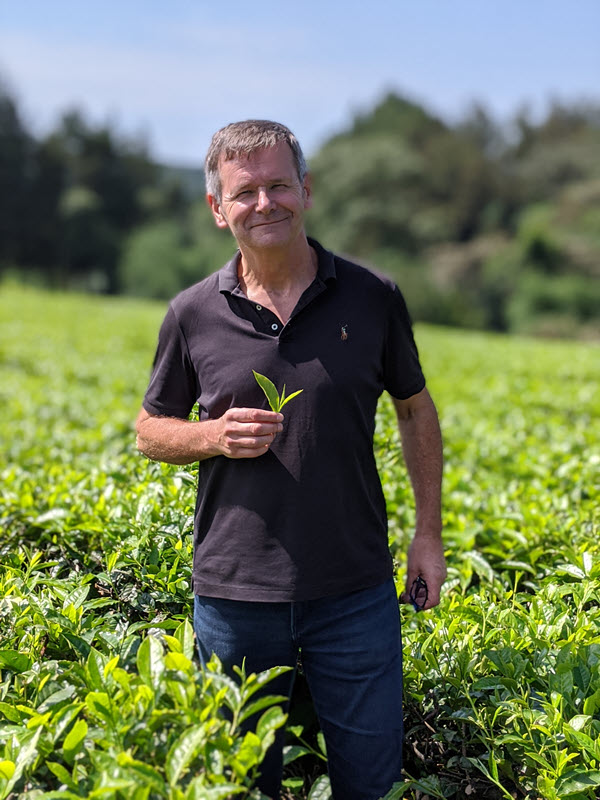A century ago, when the Portuguese first planted tea in Gurúè, Mozambique they found gentle, well-drained slopes of rich red volcanic soils at 1,500 to 3,600 feet elevation – identical to the altitude of India’s Darjeeling mid-tier gardens. The climate is cool and dry from May to September and hot and humid between October and April. Annual rainfall averages more than 3,000 millimeters. By 1950 production exceeded 20,000 metric tons a year and there was more land under tea in Mozambique than any country in Africa.
Listen to the interview

Mozambique is God’s Country for Tea
John Snell is principal at NM Tea B Consultancy, with expertise in sourcing that spans 35 years of procurement, supply chain management, and importing tea for major brands and private label suppliers. He also owns Ela’s Tea a specialty tea supplier and blender. John resides in Toronto, Canada.
Dan Bolton: John why is Mozambique is such a great place to source tea?
John Snell: Firstly, Mozambique’s latitude is a bonus; given the warming of the equatorial region, Gurúè is a more stable environment for tea and unlike much of Africa’s tea region, has true seasonality. With a true off-season, Gurúè offers an opportunity to produce true first, second, and autumnal flush specialty teas, something quite rare on the continent.
Furthermore, Zambezia province sits on the Great Rift Valley whose high sides create a rain shed and whose depths collect groundwaters. This together with loamy soils and the seasonality makes Mozambique God’s country for tea.
Dan: Will you describe the Portuguese era of tea production in Mozambique that began with plantings in the 1920s?
John: Mozambique was a Portuguese colony for 700 years and chose this place above others, in her vast empire, as the most prodigious place to grow tea, despite being ever-present in South India and Sri Lanka. By 1950, Mozambique was the largest producer in Africa, only usurped by Kenya in the 1960s due to civil war.
Dan: Mozambique tea production is resurging, its tea industry reborn, with organic cultivation and modern, more efficient processing techniques. What is the business opportunity in Mozambique?
John: To be honest, during the civil war and thereafter, the tea produced in Mozambique was plain, weedy, poorly manufactured stuff, a price reducer for most normal tea chaps and if this had continued, I have no doubt that the business would be extinct by now. However, the civil war did the industry a favor, if you like, as it precluded Mozambique from an era when the rest of Africa geared up to support the teabag market of the UK, predominantly. When Assamica clones were created for productivity and strength rather than finesse. So, come their re-emergence, the bushes planted by the Portuguese, both Sinensis, and Assamica varieties are still there and have naturally cross-pollinated creating their own unique hybrids. There is now this astounding variety of mother bushes, which need testing and selecting, from which VP [vegetative propagation] can proliferate the types to fields.
— Dan Bolton
Resources
Listen to Tea Biz on Apple Podcasts.
Share this post with your colleagues.
Signup and receive Tea Biz weekly in your inbox.
https://feeds.sounder.fm/10363/rss.xml



